How severe and prevalent are Ebola and Marburg viruses? A systematic review and meta-analysis of the case fatality rates and seroprevalence
- PMID: 27887599
- PMCID: PMC5124280
- DOI: 10.1186/s12879-016-2045-6
How severe and prevalent are Ebola and Marburg viruses? A systematic review and meta-analysis of the case fatality rates and seroprevalence
Abstract
Background: Ebola and Marburg virus diseases are said to occur at a low prevalence, but are very severe diseases with high lethalities. The fatality rates reported in different outbreaks ranged from 24-100%. In addition, sero-surveys conducted have shown different seropositivity for both Ebola and Marburg viruses. We aimed to use a meta-analysis approach to estimate the case fatality and seroprevalence rates of these filoviruses, providing vital information for epidemic response and preparedness in countries affected by these diseases.
Methods: Published literature was retrieved through a search of databases. Articles were included if they reported number of deaths, cases, and seropositivity. We further cross-referenced with ministries of health, WHO and CDC databases. The effect size was proportion represented by case fatality rate (CFR) and seroprevalence. Analysis was done using the metaprop command in STATA.
Results: The weighted average CFR of Ebola virus disease was estimated to be 65.0% [95% CI (54.0-76.0%), I2 = 97.98%] whereas that of Marburg virus disease was 53.8% (26.5-80.0%, I2 = 88.6%). The overall seroprevalence of Ebola virus was 8.0% (5.0%-11.0%, I2 = 98.7%), whereas that for Marburg virus was 1.2% (0.5-2.0%, I2 = 94.8%). The most severe species of ebolavirus was Zaire ebolavirus while Bundibugyo Ebolavirus was the least severe.
Conclusions: The pooled CFR and seroprevalence for Ebola and Marburg viruses were found to be lower than usually reported, with species differences despite high heterogeneity between studies. Countries with an improved health surveillance and epidemic response have lower CFR, thereby indicating need for improving early detection and epidemic response in filovirus outbreaks.
Keywords: Case fatality rate; Ebola virus disease; Marburg virus disease; Meta-analysis; Seroprevalence; Systematic review.
Figures
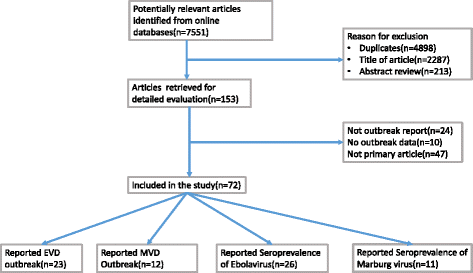
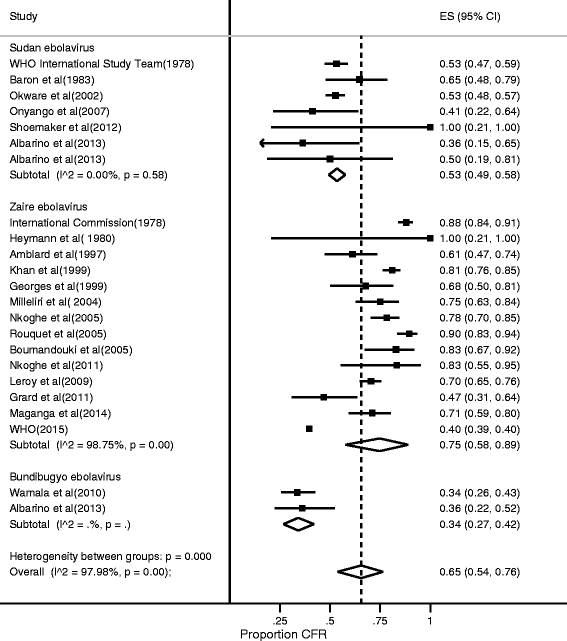
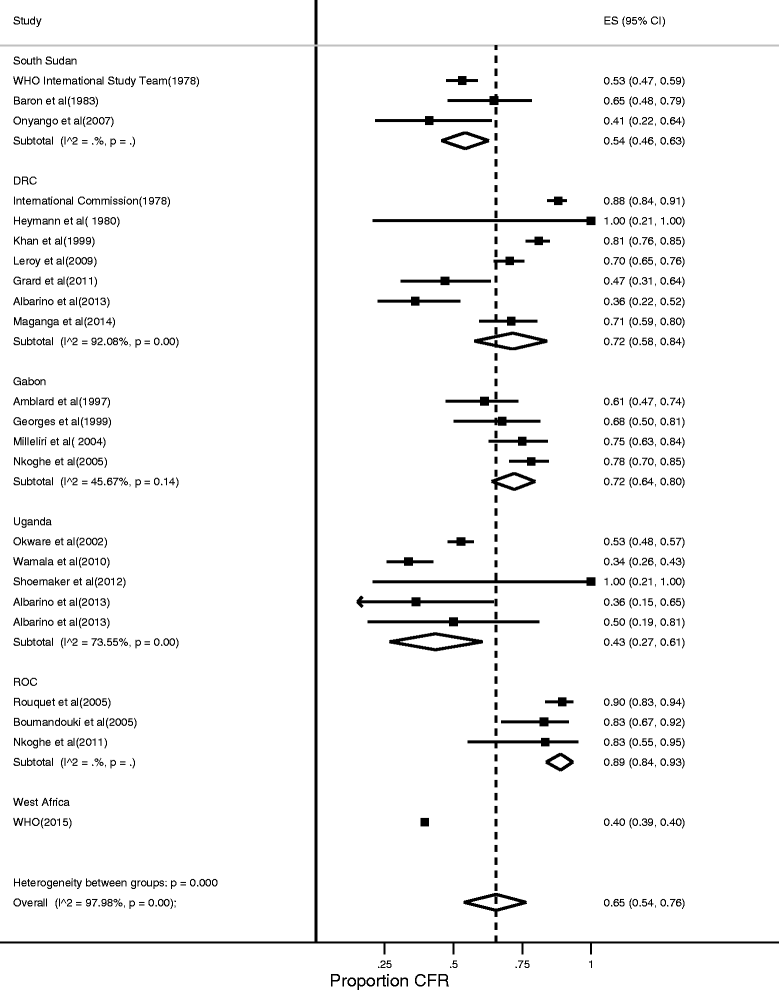
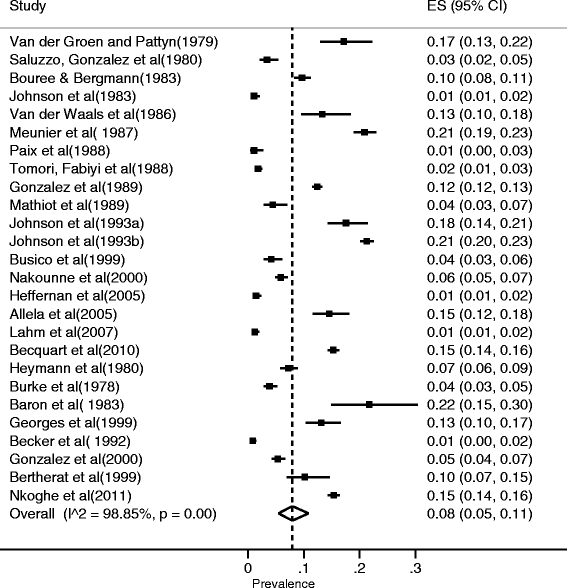
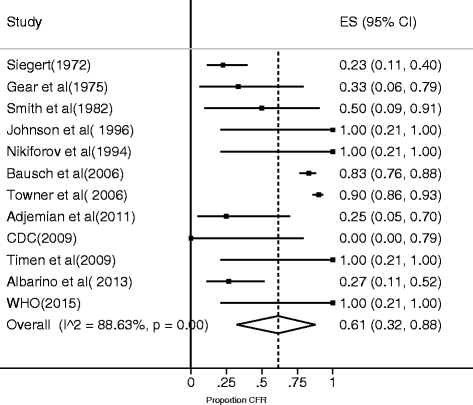
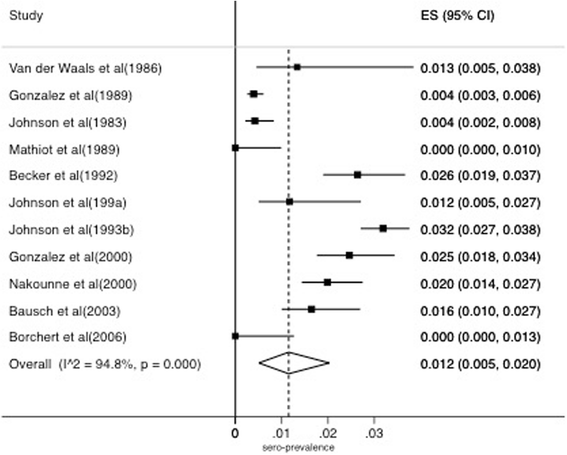
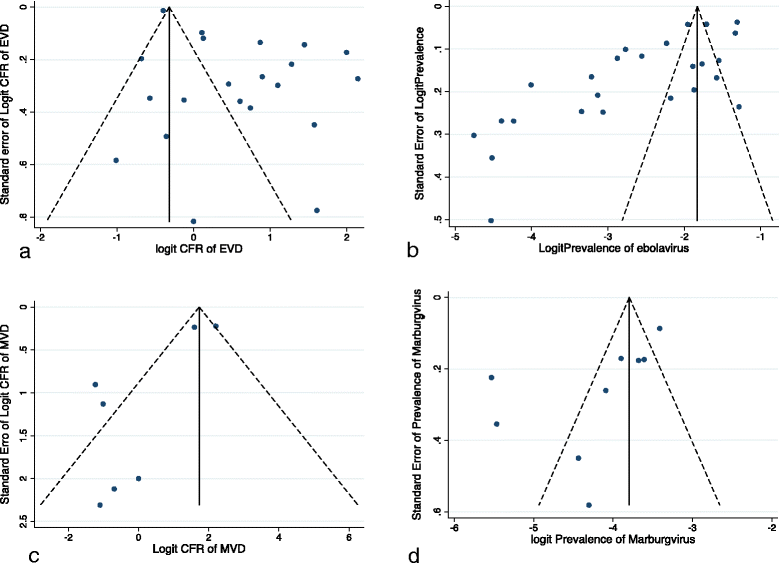
References
-
- Ebola virus disease, Fact sheet. http://www.who.int/mediacentre/factsheets/fs103/en/. Accessed 20 June 2016.
Publication types
MeSH terms
LinkOut - more resources
Full Text Sources
Other Literature Sources
Medical

